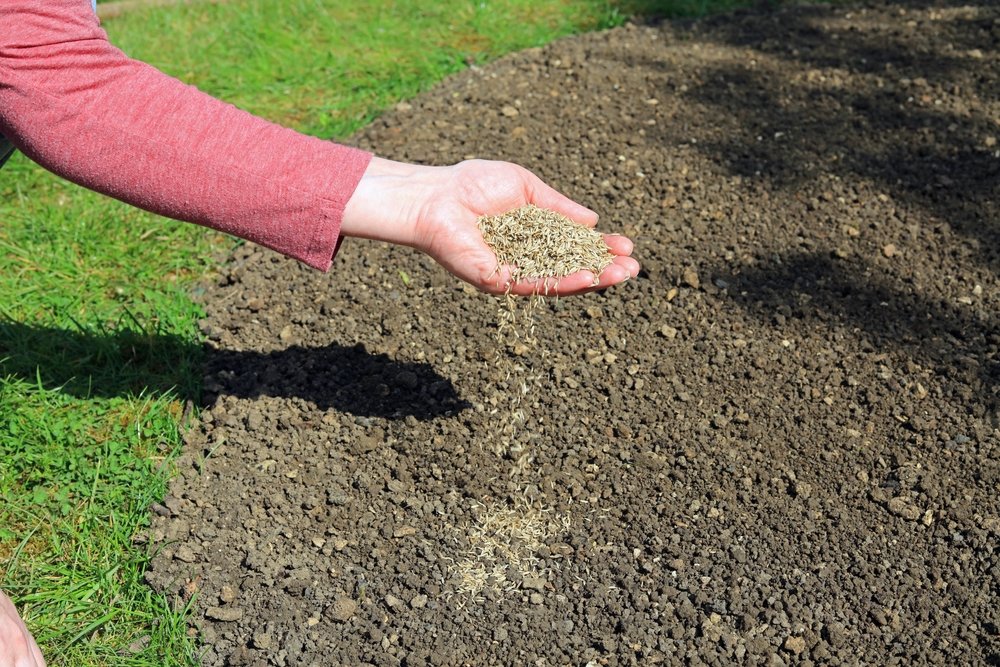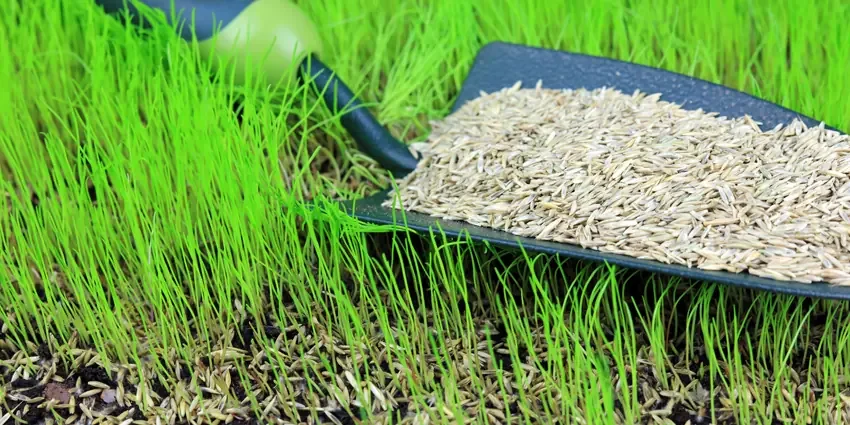Making your yard a beautiful green lawn may seem challenging, but planting grass seed is both affordable and rewarding. If you are beginning your lawn or fixing bare patches, the best approach and timing can make a huge difference. This guide will explain when, why, and how to sow grass seed. Use this guide to help you prepare your soil, choose seeds, water your lawn, and care for it after planting. Let’s begin the process.
When Is the Best Time to Plant Grass Seed?

One of the best parts of planting the grass seed is timing. If you plant at the wrong time, you get poor germination, weed competition, or added stress from the weather.
Warm-Season vs. Cool-Season Grass
Different species of grasses flourish in different climates. Understanding the difference enables you to follow your planting schedule:
- Cool-Season Grasses (Kentucky bluegrass, fescue, and ryegrass): Ideal for planting in early fall or early spring. These grow in northern conditions where summers are mild and winters are cold.
- Warm-Season Grasses (Bermudagrass, Zoysia, Bahia, etc.): You’ll want to plant these from late spring to early summer, when the soil warms to around 65°F (18°C).
Understanding Your Climate Zone
Before purchasing seed, determine your USDA Plant Hardiness Zone and consult regional grass-growing maps. If you’re in a transition zone ( central U.S.), you may benefit from a mix of cool-season and warm-season grass species for year-round resilience.
How to Prepare Soil for Grass Seed
Good soil is the foundation of a strong lawn. Without proper preparation, even the best grass will struggle to grow.
Soil Testing and pH Levels
Start by testing your soil. You can use a DIY soil test kit or send a sample to your local cooperative extension office.
- Ideal pH Range: 6.0 to 7.0
- If your soil is so acidic, add lime. However, if it’s too alkaline, apply sulfur.
- Consider adding some compost or organic matter to bring up nutrient levels and to improve the soil structure.
Raking, Aerating, and Clearing Debris
Once your soil is amended:
- Remove Debris: Get the weeds, rocks, and dead grass out of the way to avoid interference with seed-to-soil contact.
- Aerate compacted soil: If you’re reseeding and already have an established lawn, aerate your compacted soil with a spike or plug aerator.
- Rake the surface: Use the back of the rake to scratch the surface into a light, loose bed. This will keep the seeds neither lying on top nor buried too deeply.
How to Sow Grass Seed: A Step-by-Step Guide

When your soil is all ready, it’s time to sow the seed. Apply these steps whether you’re doing a full re-seed on a lawn or overseeding.
Choosing the Right Grass Seed
Choose a seed variety that corresponds to your climate, followed by the amount of sun you get and the amount of use your lawn receives:
- Shady areas: Fine fescues perform well.
- Heavy traffic areas: Perennial ryegrass is durable.
- Sun-scorched lawns: Kentucky bluegrass or Bermuda grass thrive here.
Pro tip: Use certified seed blends—they’re cleaner, checked for purity, and have better germination rates.
How to Spread Grass Seed Evenly
Consistency is the key:
- Use a broadcast spreader for large areas or a drop spreader for more control.
- Divide your total bean in half. Apply one half north-to-south direction, then the second from east-to-west. This cross-hatch design minimizes missed spots.
- Very lightly rake the seeded area so that the seeds are barely covered with soil (¼ inch deep).
Watering and Mulching Techniques
Watering is one of the very important things to consider while germinating seeds:
- After sowing, lightly water the spot so that it’s wet but not drenched.
- For the next 2-3 weeks, practice watering 2 to 3 times a day to keep the surface moist.
- After getting their grass to 1-2 inches, reduce to once daily and then eventually to deeper, less frequent waterings.
Cover the seeds with a thin layer of straw mulch or a commercial seeded blanket to protect from birds, wind, and water runoff. Avoid deep layers of mulch that will block sunlight.
How to Care for Your Lawn After Sowing
Your lawn’s path doesn’t end at germination. The next few weeks are crucial to growing strong roots for the long-term health of your new plant.
Watering Schedule for New Seed
Here is a quick watering timetable:
- Days 1–14: Mist the top layer 2–3 times per day to keep it damp.
- Weeks 2–4: Water once daily. The soil should be kept moist 1 to 2 inches deep.
- Week 5+: Deeply water 2-3 times per week to promote deeper roots.
Don’t overwater, as that can smother newborn roots or introduce disease.
Mowing Guidelines
- Wait until the grass is at least 3 inches tall before mowing for the first time.
- Use a ⅓ of the grass height rule when mowing the lawn.
- Use sharp mower blades to avoid ripping or stressing the new grass.
Allow your lawn to adjust and add strength before you jump back into your normal mowing schedule.
Common Mistakes to Avoid
Skipping soil preparation: Poor soil = poor results.
Sowing too densely: May result in crowding or competition.
Letting seeds dry out: Over- and underwatering them are at the top of the failure list.
Mowing too early: Mowing too soon can pull up young grass.
Ignoring weeds: To help your grass win out, hit it early.
Conclusion
It isn’t a difficult process to sow seeds of grass, but it requires attention to detail. Moreover, timing, seed choice, soil prep, and watering all play a part in dictating the results. With this guide, you can make thick lawn more beautiful and earth-friendly. Remember, nature takes time. With proper care of your new lawn, and it will make your garden a showpiece for many years.
FAQs
Yes, this process is called overseeding. Just be sure to mow low, take away the debris, and perhaps lightly aerate the surface so the seed has good contact with the soil.
Germination will occur in 7 to 21 days, depending on the type of grass, temperature, and moisture level.
Fine fescues (including creeping red or chewings fescue) are great for shade.
Best to avoid it for at least 3-4 weeks. It avoids seed displacement and compaction.
Use a starter fertilizer that is high in phosphorus to encourage early root growth. Steer clear of weed-and-feed products, as they can damage seedlings.



